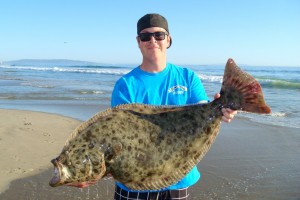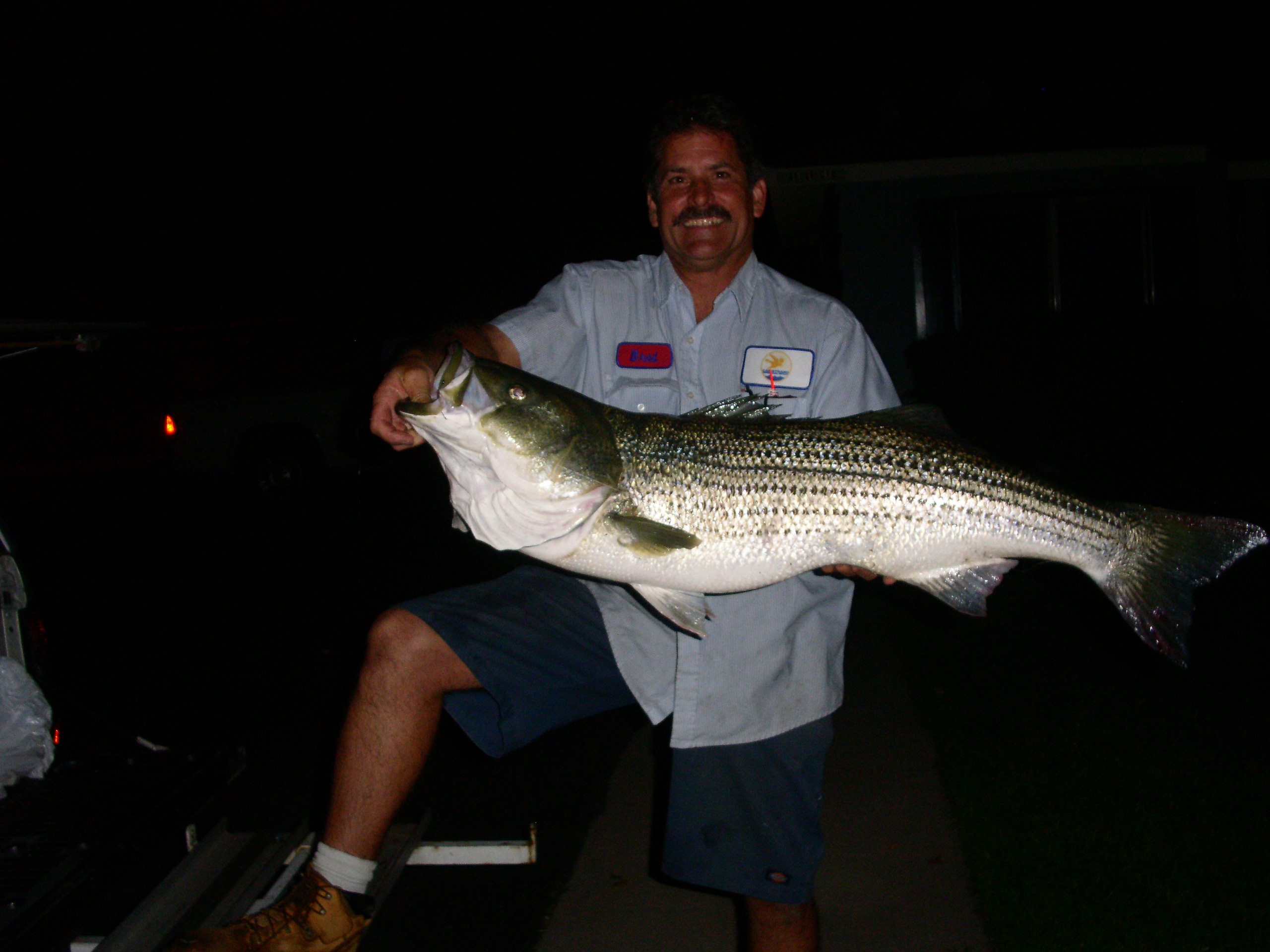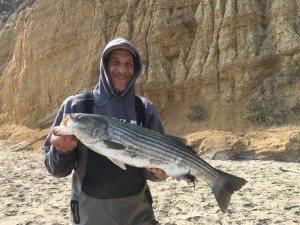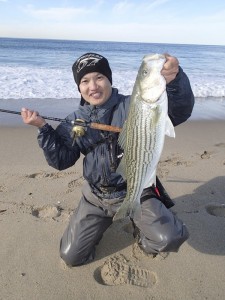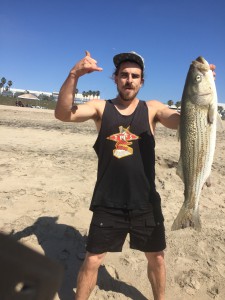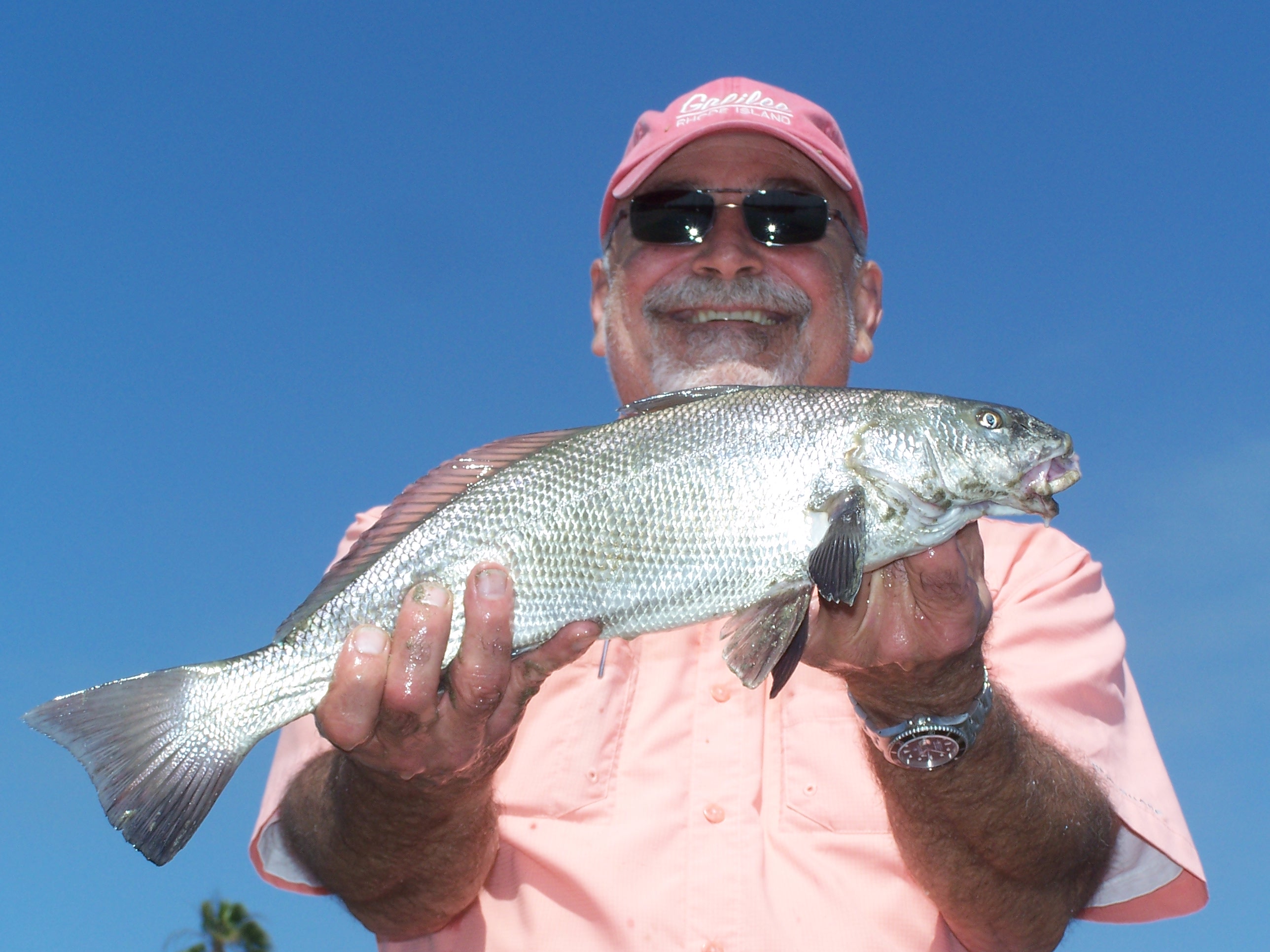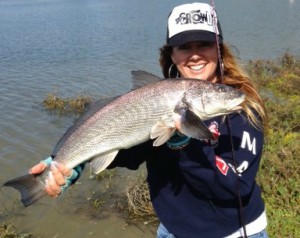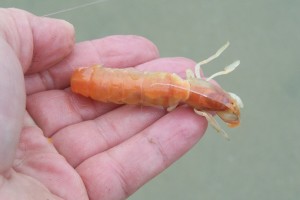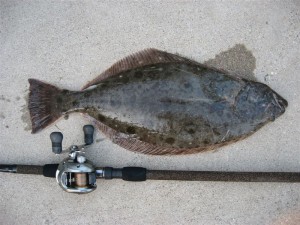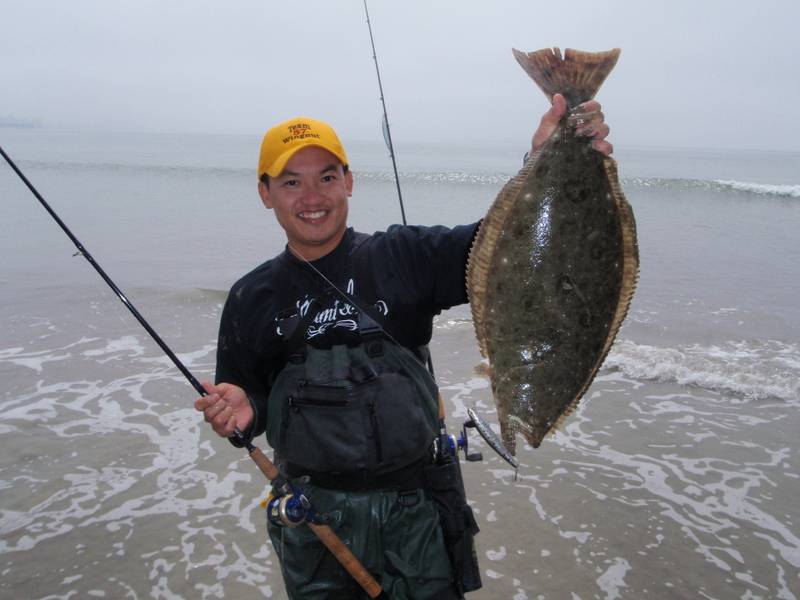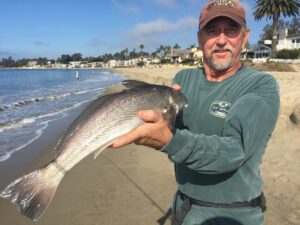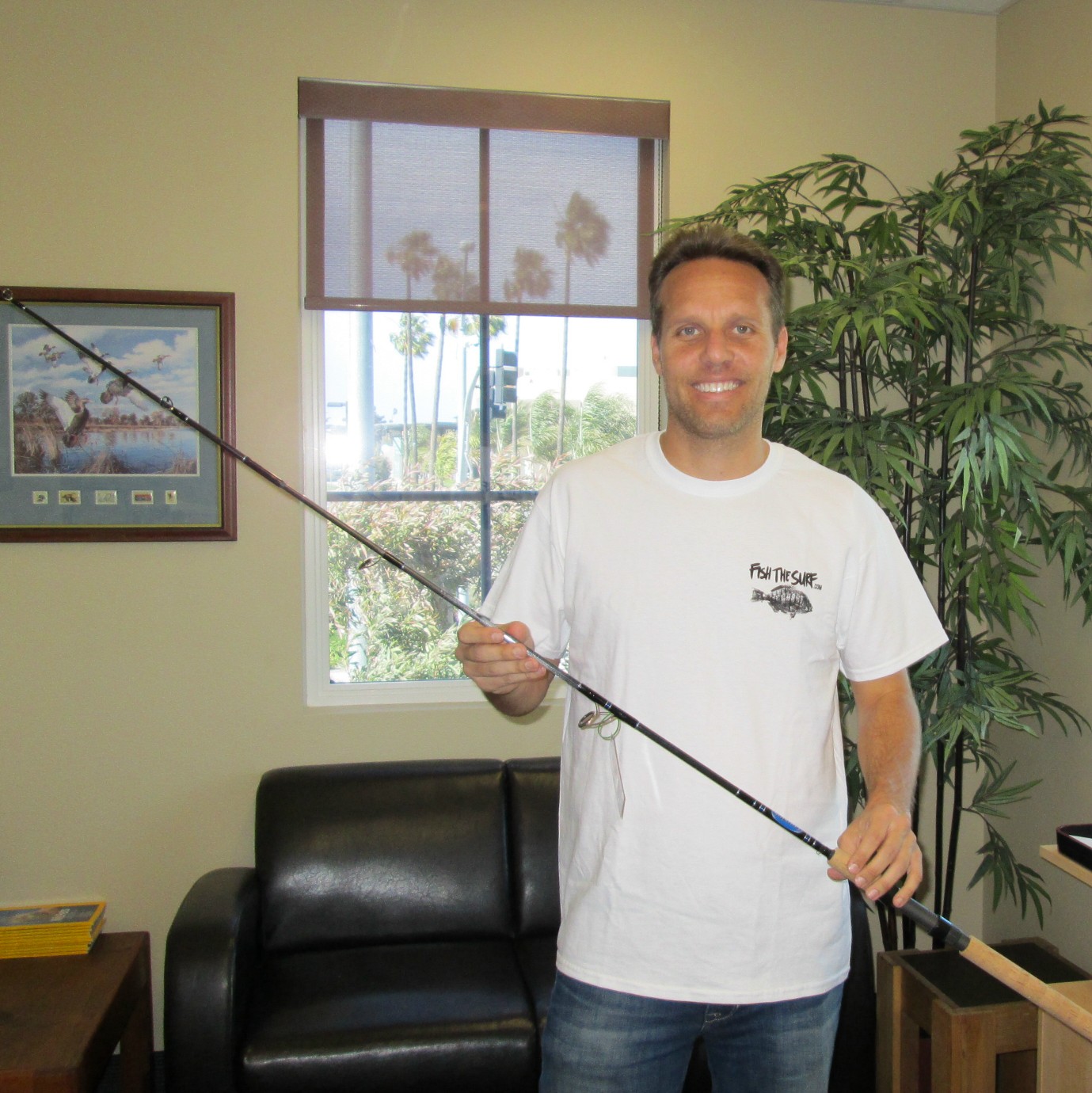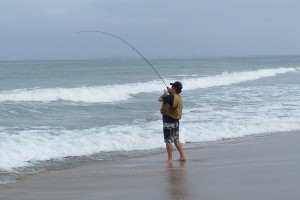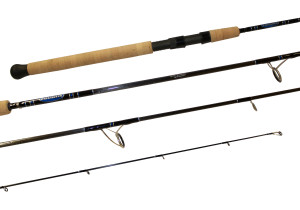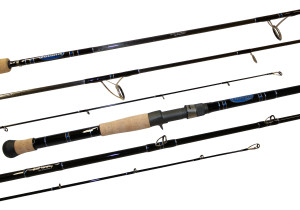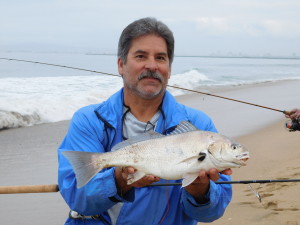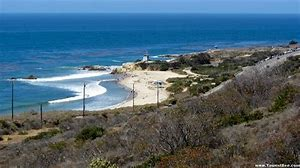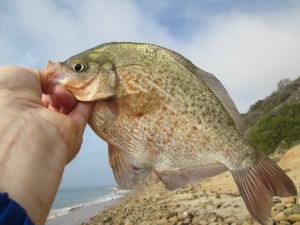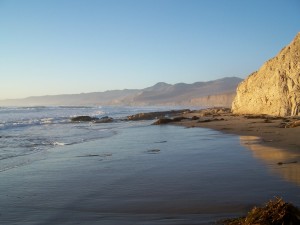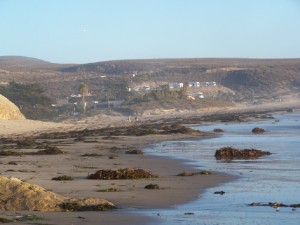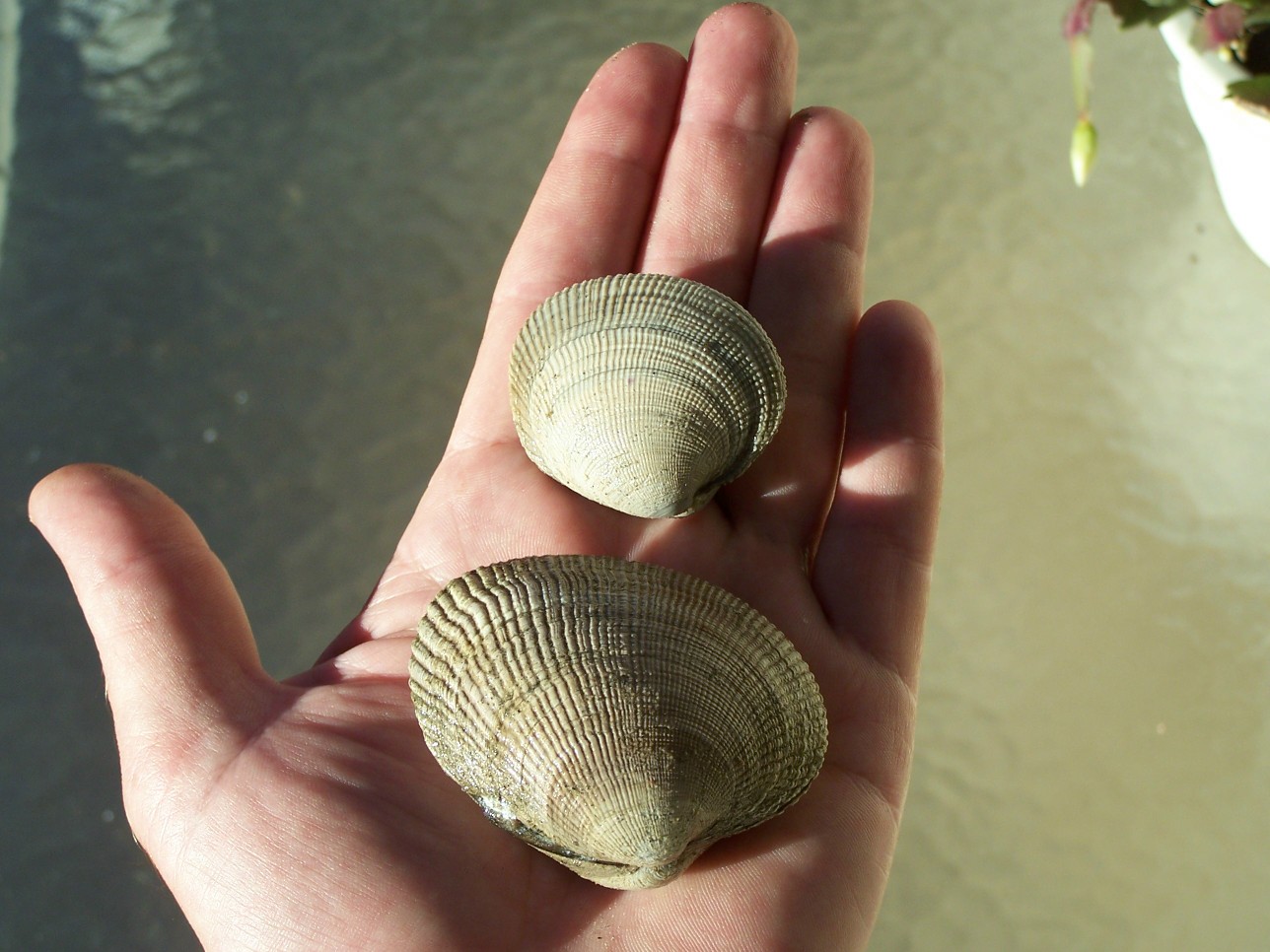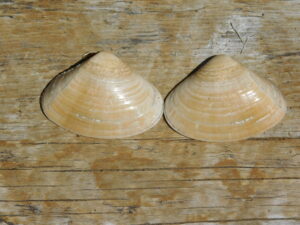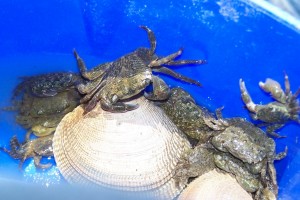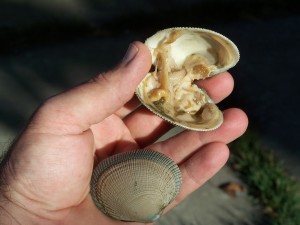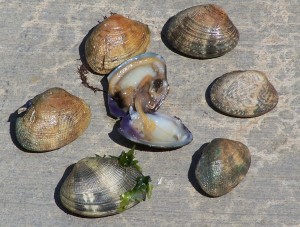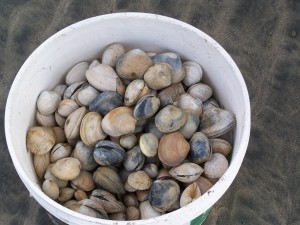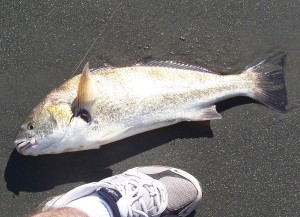Southern California
Surf Fishing Report
March 2024

Surf fishing was nothing less than phenomenal in the month of February. I think it’s because something I’ve never seen has happened…that even surprises me. From last month until today the water temperture from Santa Barbara to San Diego actually went up. That’s amazing! With all the huge storms we’ve had and the strong winds that often turn water over, you’d expect that water temps would not only drop but be much cooler. But no!
Currently the ocean is about 6 to 8 degrees warmer than usual in the CA Bight, the water temps are up all along the coast and the temperture of the water near the bottom remains warm too. Warm water in the entire water column! All of this has added up to provide some amazing fishing. Sand crabs, although sparse, are still on the beach along with tons of yellowfin croaker, spotfin croaker, barred surfperch and corbina. Is this summer?

It appears that because of swells from the South (which we will begin seeing mid month) will continue to send warm water north and mititgate water cooling. Will Last summer extend to summer 2024, with no winter off? Late April is often the beginning of the sand crab/corbina season and we are almost there already. It looks to me like we’ll have a long season for yellowfin, spotfin and corbina because of the abundance of food so early in the season.
My stategy for March doesn’t change due to warmer than expected water. This is one of the best months of the year to target spotfin croaker and halibut. Spotfin will be keying in on ghost shrimp and lug/blood worms. Fish them using the carolina rig on sand points and near structure (offshore rocks, jetties, harbor entrances). Cast your bait out and slowly retrieve toward shore. Use a fan casting pattern to cover as much bottom/holes/troughs as possible. They will be closet to shore at high tide so that may be the best time to fish them.

This is halibut month…or should I say hello grunion! March marks the beginning of the grunion’s annual series of spawning events at our local beaches. Early season runs, like those in March, can be spotty with smaller numbers of spawners and often geographically spread out. By using a bit of snooping, asking the lifeguard/warden, you may be able to find out exactly where they came to shore and fish there.
I like to rig up for halibut with a 7-8′ medium stiff casting rod, matched with a baitcaster (Shimano Corrado) loaded with 10lb mono. I tie the BattleStar/Lucky Craft/Rapalla directly to my line and cast using a fan pattern to be able to cover as much surface area as possible. It’s best to fish around both peak high and peak low tide. As halibut are exceptionally lazy they often feed during these “slack” periods, when there is very little current. Do expect to make 100 casts before getting a bite…but when you do get that bite, it will be a big one!
The corbina train still continues here in Orange County. This week two big corbina were caught, one at the cliffs and another along Sunset Beach on Honey Badger Baits (2″ Super Slayer Motoroil). This is the sixth corbina I’ve seen caught on these baits. I think their inventor, Glen Saldivar, is really on to something. Check out “honeybadgerbaits” on Facebook.

SANTA BARBARA/VENTURA
Santa Barbara fishing has slowed over the last few weeks. Massive water run off and the opening of several estuary entrances have contributed to lots of wood, kelp and trash in the water. Areas south of SB, like Carpinteria have had much better conditions and are producing many 9-12″ barred surf perch.
The halibut bite has cooled in Goleta (especially due to water quality) but has gotten better this last week near the Wharf (especially on it’s left/south side) and inside the harbor as these areas have had some protection from winter storms and water-bound debris.
Anglers have been using hardbaits here but also drop shot rigs and swimbaits to attract halibut bites. White, for both types of lures, has seem to work very well…possibly immatating spawning squid as they group-up off the coast.

MALIBU/SOUTH BAY
Pt. Mugu kicked out a couple big corbina this week. Both on BattleStar baits. Wow, some really good halibut fishing reported off the Dockwyler jetties, just north of El Segundo. Hardbaits on calm days fished along the sides of the jetty have produced legals. Remember to fish these areas for halibut at slack tide periods (1/2 hour before and after peak and low tide) and cast/retrieve your lure right where rocks/structure meets sand. This is where the halibut will hide to feed.
Redondo’s King Harbor has been kicking out some great bonito fishing over the last two weeks. This is a great harbor to fish from the rocks using a bubble and feather…splashing your rig along the surface will always entice bonito to bite. Another great bait inside King Harbor is a 1/8th ounce Tiny Tott, cast out on light test on a surf/trout rod and jigged back to shore. Bonito can’t resist these!

Hermosa, Manhattan, Redondo and Torrance have been kicking out some nice walleye and barred surfperch. Gulp!, grub, mussel and lug/blood worms have been working well. The entire South Bay, from Santa Monica to Palos Verdes has been pounded by huge surf….so look for an extended period of small surf and fish it on those days.
ORANGE COUNTY
Surf fishing between the Huntington Harbor Jetty and the Wedge has been nothing less than amazing. I’d say it’s been as good as any summer day. Last week Phil Friedman (check out Phil’s podcast on Friedman Adventures) had a group along Sunset Beach who picked up perch, leopard sharks, yellowfin croaker, corbina and spotfin croaker.

Anglers have been using a variety of live bait and lures. Best lures have been Kastmasters for the yellowfin and hardbaits for the halibut. Fish live bait on the carolina rig and remember to use a heavier sinker and shorter leader when the surf is big, it’s windy or there’s a strong current. Lug/blood worms have been working great for perch, yellowfin and spotfin but launch a big juicy ghost shrimp out at places like Anderson St., Bolsa South Jetty, HB Cliffs or the Newport Jetties and you’ve got a fantastic chance of catching a monster spotfin croaker.
Recent reports from South OC (San Clemente, Dana, Salt Creek, Sano) let us know that the halibut are biting down there too on hardbaits…especially near rock structure at low tide.
Check his video out CLICK HERE

Some of the best baits working in the surf now include both blood and lug worms, mussel, ghost shrimp and grubs/gulp!. Using a bright bead below your sinker and above your swivel is working great to attract large perch.
Plus, a number of corbina caught in the last several weeks have been on hard sand crabs…so if you see them in the sand, try them out!
SAN DIEGO COUNTY
San Diego has been pumping out some nice sized barred surfperch. Reports from Coronado, Torrey Pines and Carlsbad have had 10-14″ perch in the count with a mix of yellowfin and an occasional corbina.

Saturday flat calm surf in Cabo…perfect for roosters!
Thank you Jeffrey, Cliff, Brian and to all the anglers for their great reports and photos…
PLEASE keep them coming!
_____________________________________________
CHECK OUT THIS COOL DuraScent VIDEO
CLICK ABOVE
You’ll find DuraScent Products in our Store



___________________________________________________________
What To Look For This Month

A continuous line of storms spin off the Aleutian Islands and sends swells toward California. We expect to see continued NW swells thoughout the month with the added influence of swells from the South Pacific.
Synopsis:
Warm water remains the big news this month as we actually saw water tempertures go up. Big swells will continue to come in from the Northwest with two moderate impules of South swells coming up the coast in the middle of the month.
Some fantastic tides this month which will begin to usher in the first run of grunion for 2024. Considering the warm water I wouldn’t be surprised if the first runs are as big as mid-spring runs. This is sure to turn the halibut and all inshore fish on.
Over the next few days expect some heafty winds from the Northwest, followed by light offshore and then again strong winds which will accompany the next storm from the North.
Grunion Run Schedule for 2024
Our first run of grunion is just around the corner. With the fantastic halibut fishing we already are experiencing, gruion runs will only make it even better!
- 3/10 Sun 10:30 pm – 12:30 am
- 3/11 Mon 11:05 pm – 1:05 am
- 3/12 Tue 11:40 pm – 1:40 am
- 3/13 Wed 12:20 am – 2:20 am*
- 3/25 Mon 10:20 pm – 12:20 am
- 3/26 Tue 10:40 pm – 12:40 am
- 3/27 Wed 11:00 pm – 1:00 am
- 3/28 Thu 11:20 pm – 1:20 am
Observation Months 2024: March, April, May, June Collection Months 2024: July and August (Limit 30) Halibut often feed near shore before, during and after a run
Temp: 61 south, 59 north (warmer!) This is the first time I can remember the water temperture going up in the middle of the winter. Because we’ve had a couple of south swells coming all the way from Antartica, the warm water mass continues to move north. Look for small dips during storms but overall very stable water temps.
Tides:(Don’t forget your CCA Sportfishing Tide Calendar HERE) Great tides again for the month of March. March 10th is new moon and between 3/6 and 3/12 there are some days with 7’+ tide swings! That’s lots of moving water and some great high tides and super low tides that will allow you to fish areas you can’t usually reach. Harbor entrances, jetties, offshore rocks may all be within reach at these low tides. Plus, daylight savings time begins on 3/10 and will give us another hour to fish!
The full moon occurs on 3/26 and although it doesn’t have the astronomical tide swings of the new moon it does have some very good tides. Looking at the chart for 3/20 (the last day of lobster season) through the end of the month there are some fine tides for surf fishing. Every day in that period has near a 5′ tidal change which is perfect for surf fishing because it produces consistency of tide and a moderate current.

Originating in the Tasman Sea a strong South swell mill make it’s way to California near the middle of March. It’s push of warm water should continue to keep water temps up along the coast.
Winds: Look for the winds to be excessive and erratic over the next 7-10 days. Afternoon winds out of the west will reach 30+ mph and make fishing difficult for the next several days. Between storms we’ll see light offshore winds in the morning followed by 10-15mph afternoon winds out of the west.
Swell: What an amazing winter it has been for swells and swell direction. Over the next two weeks two large stroms near Antartica will sends swells all the way from South America to California. Along with those swells will be warm water. At nearly the same time we will also have large swells from the Northwest. This may be one of the reasons for the warmer water and the quick recovery of water temp and surf fishing after a storm. It does seem that there is a contest between the North and the South this winter.
WATER CONTACT ADVISORY
The recent rain has increased the risk of high bacteria levels in the surf-zone from runoff. As a reminder, there is an increased risk of high bacteria levels for at least 72 hours following any measurable rain-event (usually 0.1″ or more) during which time water contact should be avoided.
HAZARDOUS WATER CONDITONS
A number of hazards are affecting the coastal region from the passing storms including flooding and flash flooding. NOAA has issued warnings and advisories to stay out of the water and up onto the sand.



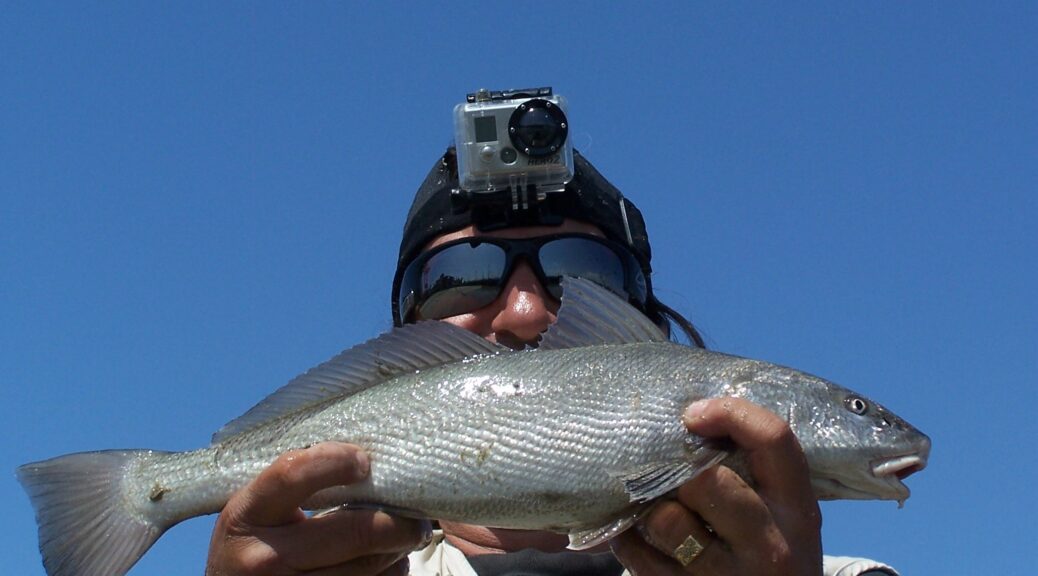





















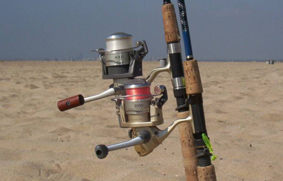
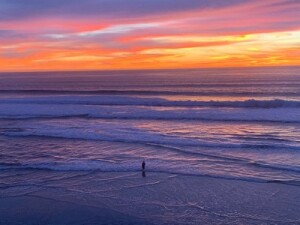 at top to look at swell size and wind speed. This information will let you know the size and direction of the upcoming surf. What speed and direction the wind will blow. Both very important for surf fishing.
at top to look at swell size and wind speed. This information will let you know the size and direction of the upcoming surf. What speed and direction the wind will blow. Both very important for surf fishing.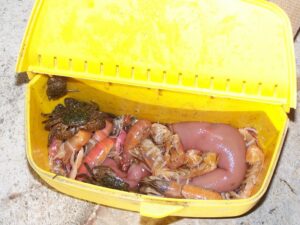 water. Place a frozen bottle in the water over night and you will have lively, crisp shrimp in the morning. If you have collected sand or sidewinder crabs, flush them with cool salt water twice per day and keep them in a cool place until use. When it comes to grubs and artificial lures know in advance what you want to use.
water. Place a frozen bottle in the water over night and you will have lively, crisp shrimp in the morning. If you have collected sand or sidewinder crabs, flush them with cool salt water twice per day and keep them in a cool place until use. When it comes to grubs and artificial lures know in advance what you want to use.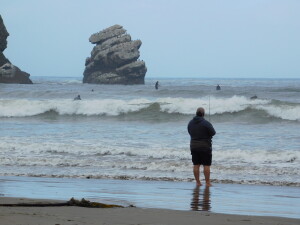
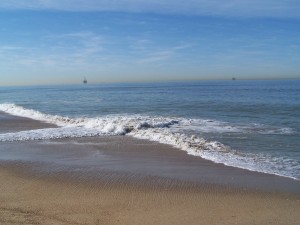 have been dredged I often fish between two hours before to two hours after the high tide. This is when the greatest amount of structure is covered by water and provides inshore troughs that hold fish.
have been dredged I often fish between two hours before to two hours after the high tide. This is when the greatest amount of structure is covered by water and provides inshore troughs that hold fish.